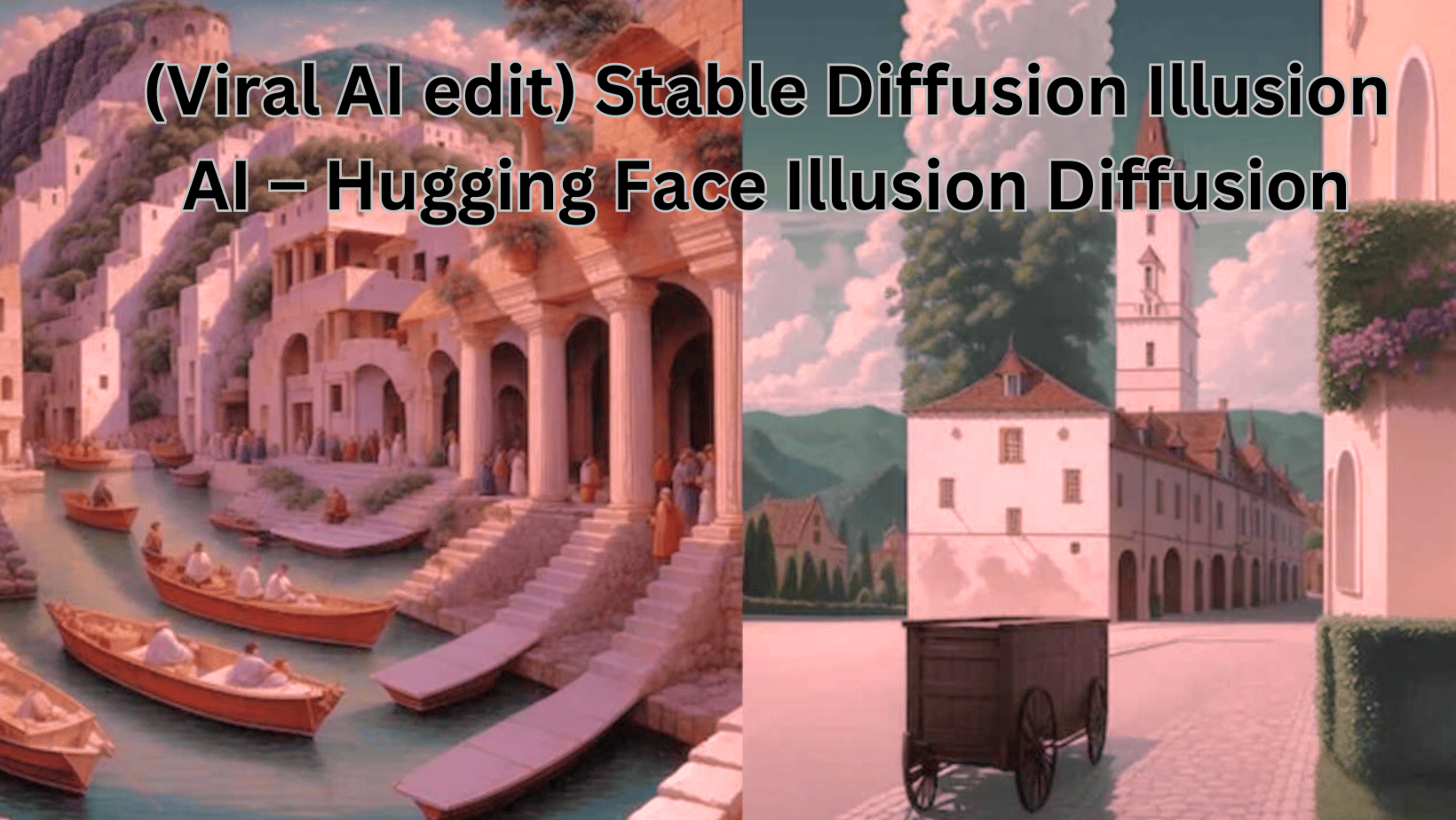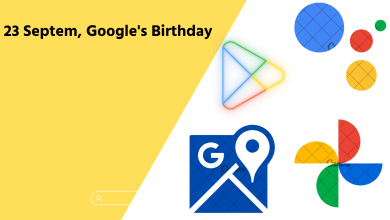(Viral AI edit) Stable Diffusion Illusion AI – Hugging Face Illusion Diffusion
I'll show you how to use this tool to make beautiful illusion arts in minutes in this piece. You will be amazed at how well it works, and your new skills will wow your family and friends. Are you ready to begin? Let's jump right in!

The creative fields of music, writing, and the visual arts have all been changed by artificial intelligence (AI). Hugging Face Diffusion Illusion AI is one of the newest and most exciting developments in this field. It is a new method that can turn simple text prompts into beautiful optical art pictures.
(Viral AI edit) Stable Diffusion Illusion AI – Hugging Face Illusion Diffusion
Hugging Face Illusion Diffusion is a tool that allows users to create mind-bending illusions from images. It works by using a combination of Stable Diffusion and ControlNet to generate images that are both realistic and impossible. To use Hugging Face Illusion Diffusion, users simply need to upload an image and provide a prompt. The tool will then generate an illusion based on the image and the prompt. Users can also adjust various settings, such as the strength of the illusion and the amount of detail in the output image. Hugging Face Illusion Diffusion is a powerful tool that can be used to create a wide variety of illusions, from simple geometric patterns to complex scenes. It is also a fun and creative way to explore the possibilities of artificial intelligence.
Here are some examples of illusions that can be created with Hugging Face Illusion Diffusion:
- A picture of a staircase that leads to nowhere
- A portrait of a person with multiple faces
- A landscape with a melting horizon
- A still life of objects that are defying gravity
Hugging Face Illusion Diffusion is still under development, but it has already been used to create some truly amazing illusions. It is a tool that is sure to inspire and amaze people of all ages.
Here are some of the benefits of using Hugging Face Illusion Diffusion:
- It is easy to use, even for people with no experience with AI
- It is free to use
- It can be used to create a wide variety of illusions
Who or what is Illusion AI?
One use of Stable Diffusion is Illusion Diffusion, which can turn text prompts into optical art pictures. Optical art is a type of visual art that uses patterns, colors, shapes, and differences to make things look like they are moving, have depth, or are in perspective.

It is a project that Stability AI, CompVis, Runway ML, EleutherAI, and LAION are working on together. It was influenced by AP123’s work, who made a Hugging Face space that can use Stable Diffusion to turn text into optical art pictures. The project’s goal is to make Stable Diffusion better at making high-quality, fast, and varied optical art, and to let anyone use Hugging Face’s platform to do it.
How to Use Hugging Face Illusion Diffusion ?
Hugging Face Illusion Diffusion is a web app that uses cutting edge diffusion models to turn text or images into high-quality pictures. You can use it to make pictures of animals, scenery, portraits, and other things that look real or artistic. These steps will show you how to use Hugging Face Illusion Diffusion:
- Look for “Illusion Diffusion HQ” on the Hugging Face Spaces website. Pick the “running” spot. To get to the Hugging Face Illusion Diffusion.
- Put in the text or picture that you want to use as the input for making the image. You can also pick one of the images on the left side of the screen.
- Choose the noise scheduler and model that you want to use to make the picture. If you move your mouse over the model and planner names, you can see a short description of each one. You can also change the temperature and the number of diffusion steps to control how fast and well the creation happens.
Hugging Face Illusion Spread - Press and hold the “Run” button for a short time. The app will show you a progress bar and a sneak peek of the picture it is making while it is working.
You can download the picture or share it on social media sites once the generation is done. You can also press the “Reset” button to start over with a fresh set of data.
How does HuggingFace Illusion Diffusion HQ work?
Hugging Face Trick Diffusion HQ is a web app that takes text or pictures and uses cutting edge diffusion models to make high-quality images. By turning around a diffusion process, diffusion models are a type of generative models that learn to make realistic pictures. Diffusion is a way to make a picture look like it’s not there by adding noise to it until it can’t be recognized. The diffusion model learns to get rid of the noise and either rebuild the original picture or make a new image that matches the text or image that was given to it.
The HuggingFace Illusion Diffusion HQ app makes pictures with a range of styles and qualities by using various noise schedulers and diffusion models. It is the job of the noise planner to decide how much noise to add or take away at each diffusion step. Changes to the number of diffusion steps and the temperature can also be made in the app, which affects the speed and variety of the generation. Read: What is Meme Marketing Use Memes to Boost Brand Voice
Research papers 8 and 9 are used to build the Hugging Face Illusion Diffusion HQ app. These papers talk about diffusion models and the CLIP-guided diffusion method, respectively. This method uses a language-image model called CLIP that has already been taught to direct the diffusion process toward making images that match the input text. The app uses a number of pre-trained diffusion models that can be found on the Hugging Face Hub. These include models 10, 11, and 12.
What does the Stable Diffusion Illusion AI – Hugging Face Illusion Diffusion do?
A lot of things about Illusion Diffusion make it fun and easy to use, like:
- It’s easy to use because the design is simple and clear.
- A low-resolution picture or a text prompt, a seed, and a temperature are all you need to do. Then click “Generate.” In a few seconds, you’ll see the picture that was made.
- You can look through and try out samples in a gallery. You can look at what other people have made with Illusion Diffusion and get ideas from them.
- It has a way for you to rate and comment on the pictures that it makes. You can rate the images based on how realistic, artistic, or interesting you think they are and share your ideas with other users.
- It works with social media, so you can share the pictures you make with your friends and fans. You can save the pictures you make or share them right away on Twitter or Facebook.
What are the Applications of Illusion Diffusion?
There are many uses for Illusion Diffusion in many areas and domains, such as
- Optical art is an abstract art form that uses optical tricks to make art that looks different. Optical art can be used for fun, educating, or just looking nice. Illusion AI can help you make your own optical art or use AI to improve optical art that you already have.
- Image editing is the process of using different tools and methods to change or improve digital pictures. You can use image editing for business, personal, or professional reasons. AI tools like illusion ai can help you change or improve your photos by adding magical effects.
- Image generation is the process of using different tools and methods to make new digital images from start or from current ones. Making images can be done for study, creative, or experimental reasons. With artificial intelligence, illusion ai can help you make new pictures or optical tricks from old ones.
How does the Stable Diffusion Illusion AI – Hugging Face Illusion Diffusion work? What are its pros and cons?
With artificial intelligence, Illusion Diffusion is a great tool that can make accurate and artistic optical illusions. You should be aware of some problems and restrictions, though, such as:
Cost to compute: Illusion Diffusion uses the Stable Diffusion model, which uses a lot of resources. Expect delays or not being able to access the site when it’s busy.
Quality and variety: Illusion Diffusion accepts chance, which leads to a variety of outcomes. Quality and reality can be different, though. Be ready for noise, distortion, or changes from what you input from time to time.
Implications for ethics and society: Illusion Diffusion uses AI’s creative power, but it may sometimes produce content that goes against ethics or norms, like violence, sexual content, hate speech, false information, or propaganda. Keep an eye out.
Questions People Ask Often
What does Stable Diffusion mean?
Latent diffusion is a type of generative model that can make pictures that look real and varied from random noise. Stable diffusion is a type of this model. Latent diffusion models have a special type called Stable Diffusion that can make high-quality images with fewer diffusion steps and less computer work.
What does Illusion Diffusion AI mean?
Stable Diffusion can be used to make Illusion Diffusion AI images that can be made from text questions. Op art, which stands for “optical art,” is a type of visual art that uses patterns, colors, shapes, and contrasts to make it look like things are moving, having depth, or being seen from a different angle.
What problems does Illusion Diffusion have and what can’t it do?
There could be problems with Illusion Diffusion when it comes to the cost of computing, quality, variety, and the moral and social effects it has.
Why is Illusion Diffusion a Good Idea?
Illusion Diffusion makes it easy for everyone, even people who aren’t artists, to make and enjoy op art. It has a lot of different options, is high-quality, and is easy to use. It encourages creation where optical art and AI meet.
This piece has talked about the interesting topics of Stable Diffusion and Illusion Diffusion, including how they work, their pros and cons, their uses, and their difficulties. We’ve shown how these tools can be used for creativity through examples. We hope this article was fun to read and that you learned something new about these cool tools. If you want to try Illusion Diffusion for yourself, we hope you enjoy using AI to make your own visual illusions.




